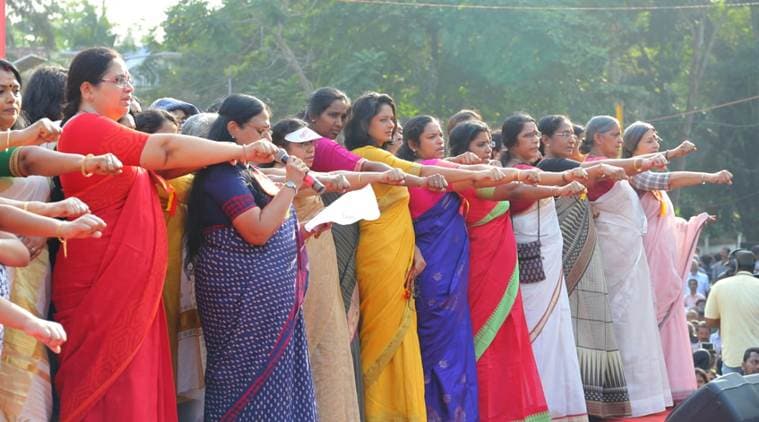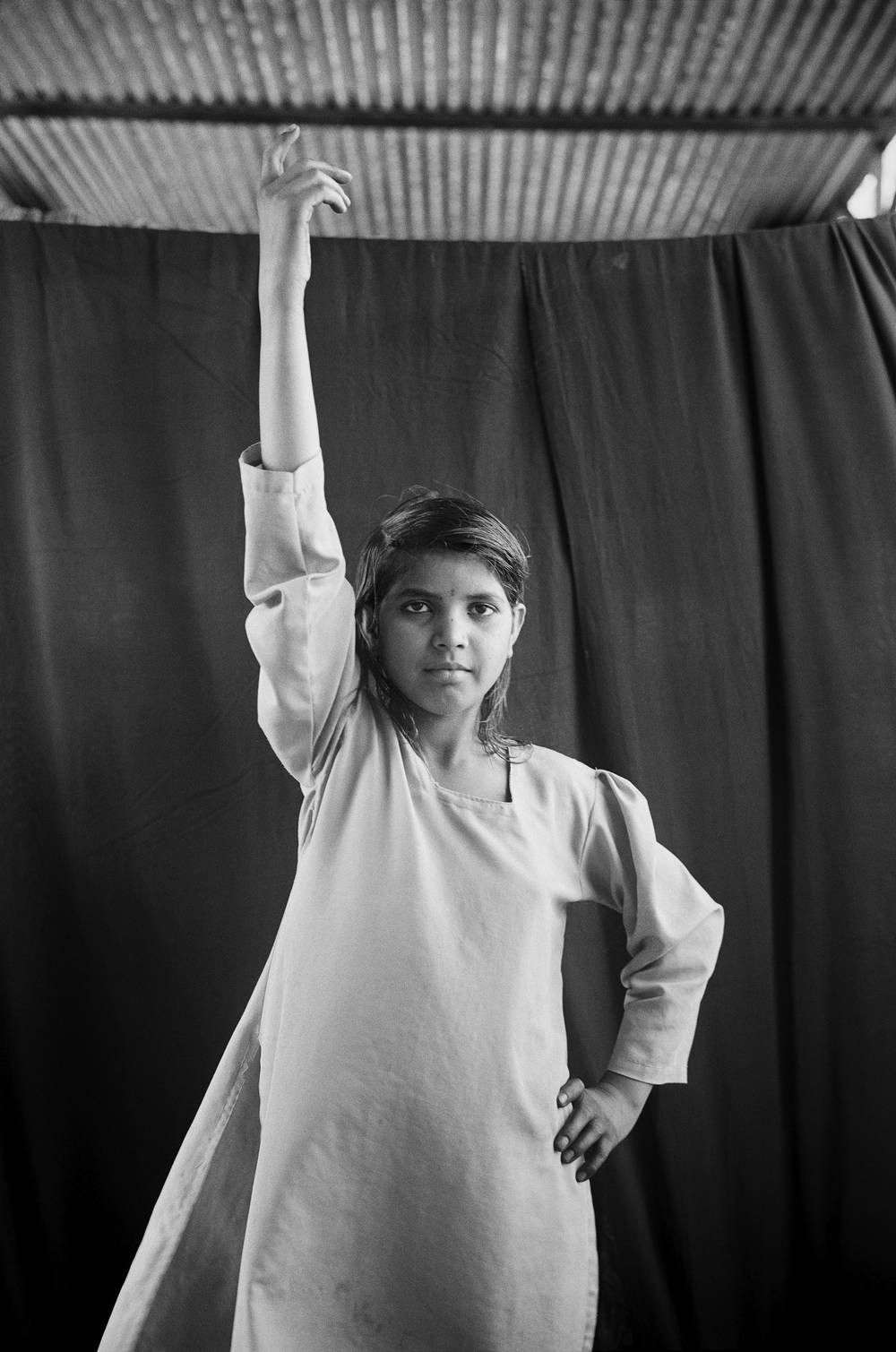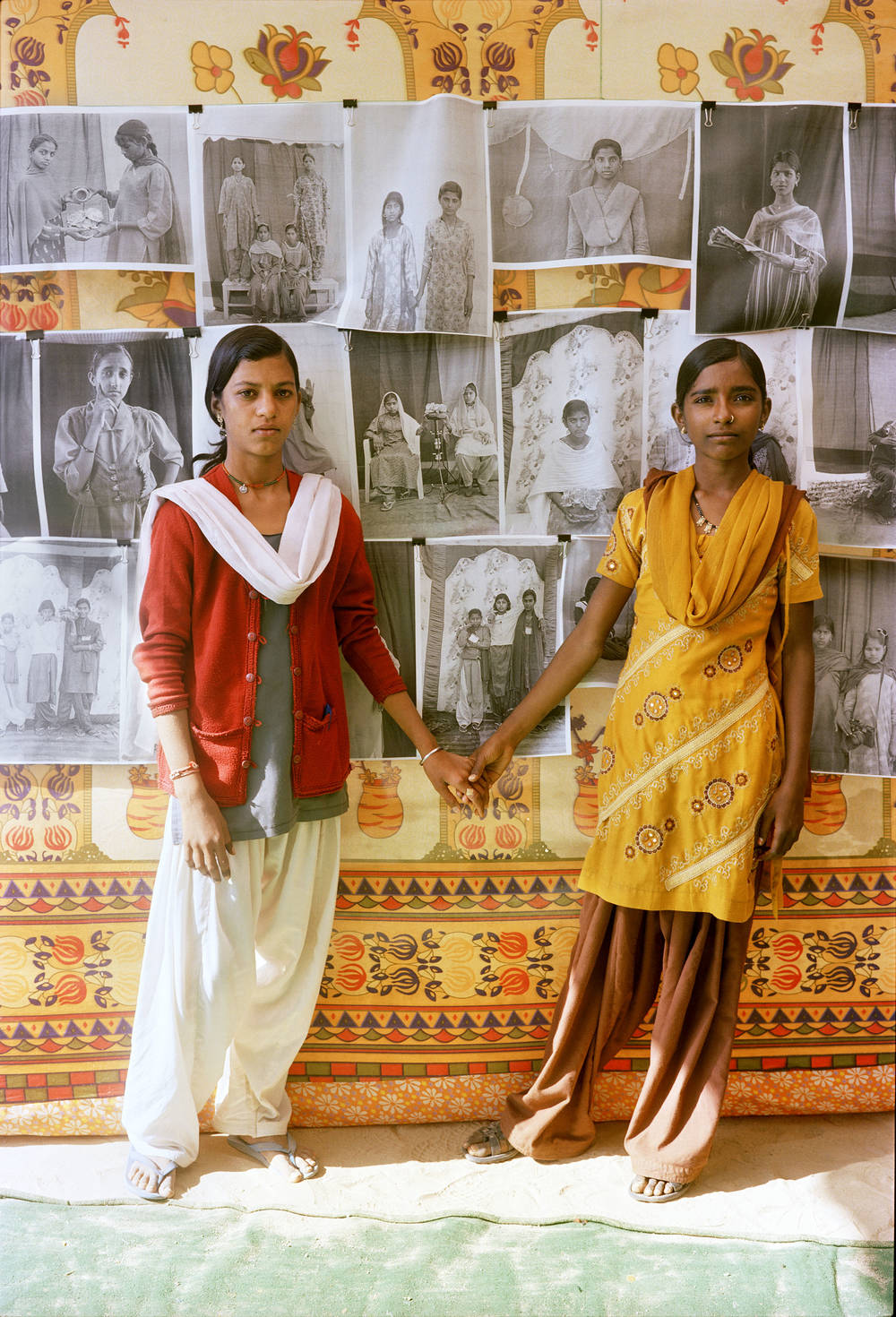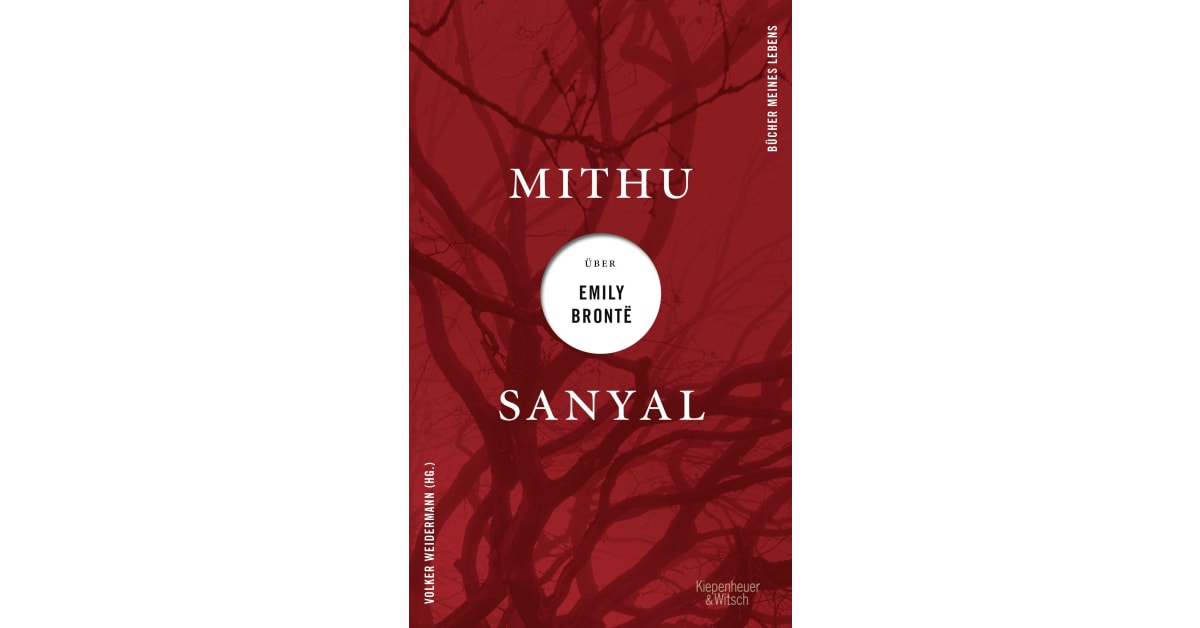In the second part of the interview, Mithu Sanyal talks about the German and British diaspora, mother/daughter relationships, and what her readers can expect from her next novel.
In her non-fiction books, cultural studies expert and author Mithu Sanyal addresses sexism, rape and the cultural history of the vagina and in her widely acclaimed debut novel “Identitti”, which in 2021 was shortlisted among other things for the German Book Prize she likewise focuses on feminist subjects. While feminist theory is one influence in “Identitti”, her novel is in fact shaped more by discourses of post-colonialism which she then links to experiences of the Indian diaspora in Germany in a profound manner and with a sense of humor. Artist Gauri Gill also devotes herself in works such as “The Americans” to the topic of the Indian diaspora. In her multi-facetted oeuvre Gill questions forms of representation informed by colonialism and offers women and marginalized groups in particular a new visibility and opportunity for self-expression. We spoke to Mithu Sanyal about the Indian diaspora and GAURI GILL.ACTS OF RESISTANCE AND REPAIR.

Mithu Sanyal, photo: Guido Schiefer, Image via wienerzeitung.at
In “The Americans” Gauri Gill captures the specific nature of the Indian diaspora, while at the same time making clear that there can be no uniform image of it, as every experience is different. In this series of works, which was originally inspired by Gill’s father, she shows the many facets of Indian life in the US. What is your view of this series and are there differences to the German and English diasporas?
Of course there is an Indian diaspora in Germany, but we are so much smaller. That means that for a very long time Germany’s Indian diaspora was really invisible, partly because – for reasons such as racism – the community took pains not to be seen. My father, for example, responded to the call to “integrate yourself,” really tried to become more German than the Germans, only to realize at some point that he would never be able to do that. Hence, he would always be perceived as the Other. The so-called “Heimatvereine” immigrant community associations, for example those of the Turks, have all been supported by the German state for a long time because Germany wanted the “Gastarbeiter” to go back at some point, so they were to cultivate a feeling for their country of origin even while they were here. But the Indian diaspora in Germany was simply too small for that. In the UK, it’s completely different. For example, I would really love to see a series like this by Gauri Gill about Britain, because I know so little about the reality of American life – except for Lilly Singh, but she’s Canadian. What I mean is that a great deal in “The Americans” is extremely foreign to me, because it’s American and not because it’s Indian. The Indian diaspora in the UK, meanwhile, was quite important for my sense of self because I was simply lacking German-Indian stories and films and comedy. So personally, I would find it really exciting to see what angle Gauri Gill would take on that.
In your opinion, what is the most widespread misconception about India or the Indian diaspora within Germany? Are there any particularly unpleasant stereotypes – positive or negative?
What comes to mind, for example, are the ideas of patriarchy and the oppressed Indian woman who is either banished as a widow – Sati – or burned as a wife – the so-called dowry murders. So Indian womanhood is always perceived as silent and smiling and submissive, like Sita from the Ramayana. What is not perceived, on the other hand, is that India had a woman prime minister long before we did, and Indian women are incredibly present in politics and academia. There is also a very large feminist movement in India, and so on. And we don’t get that both are possible – discrimination and self-determination – and that the position of women in India is complex just as it is in Germany. For us, India is either a country where everything is great and everyone is spiritual, or it’s a place where poor women are oppressed but don’t fight back. And why? As soon as you read the explanations it becomes pretty crude. Because their culture is supposed to prevent them from fighting back. Uma Narayan coined the term “death by culture” to refer to this, to highlight that we in the West always say: She couldn’t escape her culture. These are Orientalist fantasies that construct the migrant victim-woman versus the liberated Western woman, and these are very dangerous narratives.
By way of example: What are five million Indian women in a row? No, it’s not a racist joke, but a demonstration. In 2019, the European media failed almost entirely to report on the 620km-long # WomenWall across the Indian state of Kerala, as compared to the # WomensMarch in Washington.
So far, so unsurprising. I mean what are five million Indians compared to 0.5 million Americans? I didn’t know whether to laugh or to howl with rage that so many media outlets simply ignored this monumental event. And when it was written about, it was some version of “What do Indian women want? To go to the temple. Why can’t they? Because in Hinduism women are considered unclean during their periods.” Wrong – this is the American movie “The Exorcist” and not “Hinduism”.

WomenWall in Kerala, Indien, photo: Nithin, Image via indianexpress.com
Spoiler alert: There is no such thing as Hinduism, only Hinduisms. And in many of them, menstrual blood is the best liquid, along with semen and vaginal ejaculate. It is also not at all the case that women are not allowed in the temples, just not in the Sabrimala Temple – until the Supreme Court ruled late last year that they should be. In doing so, it overruled a controversial 1991 court ruling that prohibited women from entering on the basis of an even more controversial “tradition”.
So what do you do when tempers are running high and all it takes is a spark to make them explode? Get together and figure out the best way to implement the court’s decision for everyone? No, you box two women into the shrine with police protection. Whereupon the Hindu nationalist BJP enthusiastically called for a blockade to the temple and for everyone to simply run riot. After all, elections are just around the corner in Kerala, and nothing is better for catching votes than public outrage. Hence, just a few days ago, when everyone was starting to run out of steam for protesting, BJP Prime Minister Narendra Modi stoked up the violent riots once again by calling the admission of women a hate crime against Indian culture.
These are methods that the German extreme right wing would be proud of, with the small difference that in India, the BJP is in power. I would like to read more about that! But it is easier to just write about superstitious Indians who are afraid of periods than about politics that you do not understand because you are not interested in them.

That goes pretty well with Gauri Gill, who formulates it as a kind of objective or ideal to place her focus strongly on women in order to show their strengths. She wants to form a counter-narrative!
Exactly! Because if you’re discriminated against, and the narrative otherwise is that you’re the thoroughly helpless victim, then that’s completely disempowering. It’s terrible. Sometimes the narratives that we have in order to help people merely serve to solidify this discriminatory situation. And that’s something Gauri Gill tackles very impressively in series of works like “Balika Mela,” for which she works with girls and gives them a space to express themselves.
Alongside the role of feminism and self-empowerment, which we have just highlighted, other themes particularly central to Gauri Gill’s art include collaboration, friendship among women, and the mother/daughter relationship, not to mention questions of representation; giving people a voice, but also finding a voice yourself. What are the similarities or differences with your own interests, and do any of these themes have special meaning for you as well?
I know that this mother/daughter theme really touched me, perhaps because it’s one of the themes of my next novel. I was particularly struck by two mothers in the exhibition: There’s Gauri Gill’s own mother, Vinnie Gill, whose painting is in the exhibition, and there’s the mother of Warli artist Rajesh Vangad, Ladkhi Devi, who is also represented with works and who taught him the tradition of Warli painting in the first place. There are very personal parallels for me here actually; my mother always wanted to study art, but she came from a working-class family and couldn’t even graduate from high school back then. And then when I was eight, she went to night school and got her school leaver’s certificate. That had a big impact on me, her struggle for education and her feeling that she wouldn’t be taken seriously without it.
Much much later she went to Frankfurt and started painting. She also exhibited a lot, but more in cafés and at the adult education center. With that, she fulfilled her life’s dream. At the same time, she always wanted to be a “great” artist because that’s the narrative – you have to be a “great artist”! She never learned anywhere how the art market works; she only knew the popular myths and because of that she had no access to the art world. It was almost a repeat of the situation when she didn’t have a high school diploma and always thought that everyone was much smarter than she was, even though my mother is one of the smartest people I know. What she really wanted was for her art to be perceived by outsiders as art. She then fell in love with a man from Frankfurt and moved in with him, and he always said, “Yes, the pictures you painted, we can hang them in the toilet!” And that was then how the world saw her: You can do that in your spare time as a hobby. And since the world didn’t take her seriously, she also found it incredibly difficult to take herself seriously. So the fact that Gauri Gill takes her mother seriously and exhibits alongside her is something I found very moving, precisely because my mother wanting to be an artist was what gave me the opportunity to say I want to make a living from writing. Being self-employed really went against the grain of everything my family believed in, but because it was my mother’s dream (with the sole difference that she wanted to paint and not write) it became emotionally possible for me to believe that this could be a perspective. And that happens relatively often, that you do something that is unusual in view of your family history, and yet there were parents or aunts for whom this was a dream that they were not able to fulfil, but which they nevertheless passed on to you along your way. I think the idea that we do everything of our own accord is massively overrated. That’s why I think it’s so great that both Gill’s mother and the mother of Rajesh Vangad are taken seriously in the show, because they’re simply part of it.

To get back to “Identitti”: In your novel, you dealt with questions of identity and representation. In the context of postcolonialism, among other things, these discussions are currently seeing great drive and emotion. What is particularly striking about “Identitti” is that you repeatedly manage to convey the discourses in a humorous way. Do you see humor as a way of understanding that goes beyond our differences?
Yes, and for many reasons. I remember the first time I encountered conversations about racism beyond the academic context was in British comedy, specifically the BBC series “Goodness Gracious Me”. And it really changed the discourse about Indians in England, because there was this idea that humor was exclusively British – as if others just didn’t get it! And the first reviews of the series were really like, “Oh, Indians can be really funny, so they’re just like us. That was in the early Nineties, you have to imagine that. And I was fascinated by the fact that in this comedy series everything could be said, the most blatant forms of racism, but also self-exoticization and so much more, but from the point of view that “we’re all in the same boat and look together at this strange phenomenon of racism”, and the message wasn’t “you’re a bad person”, but rather “we can laugh about it together”. That’s why I find humor so healing. But humor doesn’t guarantee that, of course. It goes without saying that there is also some very bad racist comedy. Up to that point, people just laughed at the “insanely funny foreigners”. The title “Goodness Gracious Me” is a reference to Peter Sellers and Sophia Loren’s hit song “Goodness Gracious Me”, which was written for the movie “The Millionairess”, where Peter Sellers plays a highly stereotypical Indian. The comedy series “Goodness Gracious me” works very differently; it’s about laughing at yourself – something that is very important in English comedy; we don’t laugh at others, we laugh at ourselves! After all, racism is not just something that is on the outside; we all grew up with the same baggage of racist knowledge. And these are all things that can be dealt with so impressively in comedy.
Basically, in all my books, even when I talk about painful things, I try not to reproduce the pain in the language. For my book about rape, for example, that was hugely important to me, to not reproduce disempowerment in the language; rather, to find a language that doesn’t deny the pain but makes empowerment possible. It also took me a relatively long time to find the language for “Identitti”. It was important for me to convey linguistically that Nivedita puts her heart and soul into things, but at the same time she is always looking at herself from the outside and noticing the absurdity of her thought processes. And both are true. A Russian writer once said that the deeper you want to go, the lighter you have to write. I really believe that. I want to write literature with humor; there’s also great literature without humor, but that’s not the literature I want to write.

Mithu Sanyal on Emily Brontë, Kiwi-Verlag, Image via kiwi-verlag.de
Your book about Emily Brontë has just been published by Kiwi – it is part of a series that is intended as a new library for which writers present one of their favorite books. What can your readers look forward to next? Do you already have a new project in mind?
Actually yes, I’ve just signed the contract for my next novel; the research for it is at a fairly advanced stage, and now I have to get down to the real writing. It includes a time travel plot, or more precisely there’s a part that happens today and a story line that takes place between 1906 and 1909 in London, namely at India House. That was a boarding house for Indian students, but in fact it’s where all the Indian revolutionaries lived, building bombs and smuggling weapons and so on. The meta-theme is the confrontation between armed resistance and nonviolent resistance – because we do have the feeling that we did everything right. We had chosen Gandhi and nonviolent resistance, and that turns out to be falsehood in many places; India would never have become independent without armed resistance. Nevertheless, it is something that I deeply believe in, that armed resistance leads to entirely new problems. That’s the one tension in the novel. But there’s also a locked-room mystery and, as I said, this mother-daughter theme and a lot more. The plan is for the novel to be published in the spring of 2024.









